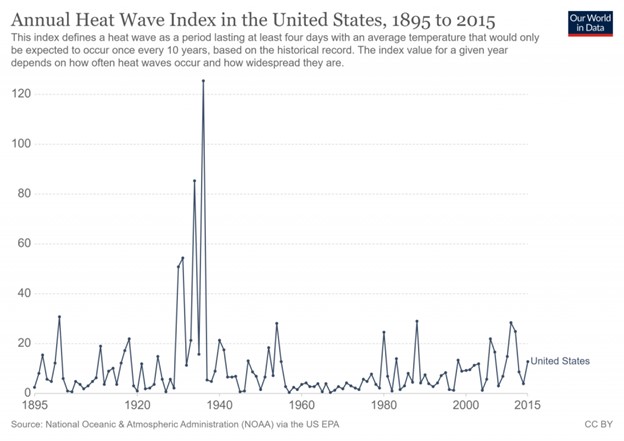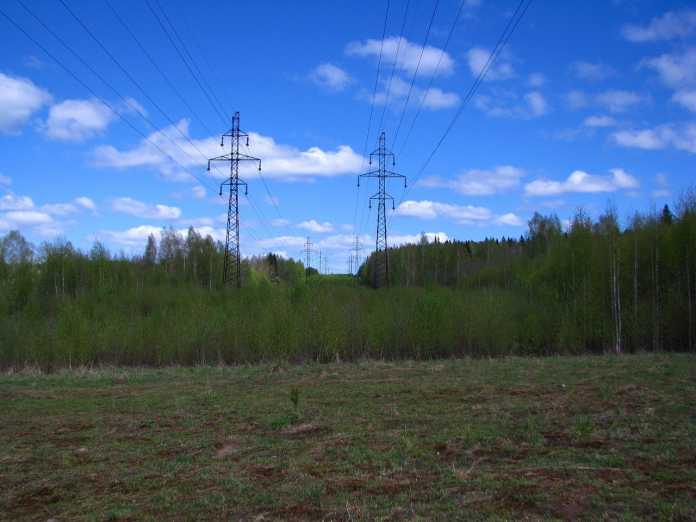The New York Times published a February 16 article claiming climate change is making America’s power grid more vulnerable due to an increase in extreme weather events. However, objective data from the United Nations Intergovernmental Panel on Climate Change and the U.S. National Oceanic and Atmospheric Administration (NOAA) show the Times’ claim that extreme weather is becoming more common is false. The evidence indicates it is policies promoting wind and solar power to fight climate change, rather than climate change itself, that is putting the most pressure on power grids.
The Times story, “A Glimpse of America’s Future: Climate Change Means Trouble for Power Grids,” claims, “Systems are designed to handle spikes in demand, but the wild and unpredictable weather linked to global warming will very likely push grids beyond their limits.” The story continues saying “as climate change accelerates, many electric grids will face extreme weather events that go far beyond the historical conditions those systems were designed for, putting them at risk of catastrophic failure … it is clear that global warming poses a barrage of additional threats to power systems nationwide, including fiercer heat waves….”
This Times’ claims are convincingly refuted by objective climate data. Let’s examine them, one at a time.
The Times says climate change is making heatwaves worse, yet, as shown in Climate at a Glance: Heatwaves, data from NOAA demonstrates heatwaves have become far less frequent and severe in recent decades than they were in the early part of the 20th century (See the graph).

Indeed, temperature records show, the vast majority of each state’s all-time high temperatures were set during the first half of the 20th century – approximately 100 years of global warming ago. In fact, 40 states’ record-high temperatures were set before 1960, with 25 of the record highs being set or tied in the 1930s alone. That is three times more than have been set in the 33 years since 1988, when NASA’s James Hansen first pronounced humans were causing dangerous global warming. Only two states have set new record highs since 2000, fewer than the number of temperature records set in the 1890s alone, 130 years of global warming ago.
In addition, the most accurate nationwide temperature station network, implemented in 2005, shows no sustained increase in daily high temperatures in the United States since at least 2005.
Similarly, objective data destroy allegations that climate change is to blame for record cold that struck Texas, Oklahoma, and elsewhere this past week. NOAA data show the number days each year with below-freezing temperatures in Texas is neither unusually high nor unusually low so far this century. Similarly, NOAA data for neighboring Oklahoma show a decline in the frequency of very cold weather events in recent decades. The assertion that climate change makes extreme temperatures more frequent on both ends of the temperature spectrum is destroyed by science – on both ends of the temperature spectrum.
Data from NOAA and the IPCC make it equally clear other extreme weather events that might be thought to cause power failures, like cold spells, floods, hurricanes, or tornados, have not increased in number or in severity as the earth has modestly warmed. You can see the evidence for yourself via the links in this paragraph.
While weather extremes aren’t increasing, policies enacted with an intent to prevent climate change are making the grid less reliable and flexible in response to peaks in power demand. In particular, state mandates to incorporate ever-greater amounts of intermittent wind and solar power, and federal and state subsidies for the same purpose, have resulted in the premature retirements of tens of thousands of megawatts of baseload coal power plants over the past decade. These power plants have been replaced by wind and solar industrial facilities which cannot be relied upon to provide a consistent flow of power to the grid because they are dependent on weather conditions. Nor can they be relied upon to provide on-demand power or peaking power during emergencies.
Even if the Times was right that climate change is making extreme weather events more common and severe, relying on increasing amounts of intermittent power can only worsen the problems of grid reliability, both during normal operation and during extreme weather events. Wind turbines don’t work if the temperature is too cold or if winds die down. Solar panels don’t provide energy at night, on cloudy days, or if covered by ice, snow, dust, or dirt.
Texas’s recent power emergency came as thousands of megawatts of wind power went off-line when the weather turned unusually cold, even before any ice and snow hit. Meanwhile, California has experienced repeated rolling blackouts during the summer months. What these two states have in common is they have both come to rely on increasing amounts of intermittent electric generating sources to power their respective grids. The evidence shows replacing reliable sources of electric power, like coal, natural gas, and nuclear with ever more intermittent power makes power failures more likely, whatever the weather. That’s the fact the New York Times should report.



















Feb 18, 2021 Bill Gates says the Texas governor is ‘wrong’ about wind turbines and power outages
Yahoo Finance’s Editor-in-Chief Andy Serwer spoke with Bill Gates, author of ‘How to Avoid a Climate Disaster’, about power outages in Texas, extreme weather patterns, and climate change.
https://youtu.be/N96JsixUoGg
Title: No, H. Sterling Burnett, Climate Change Does Threaten Power Grids
Climate Realism recently published an article saying that climate change does not threaten power grids. Solar and wind energy apparently aren’t as ‘reliable’ as fossil fuel energy. Fun Fact: There is something called a battery. The battery stores energy from solar and wind energy captures, so that the power system can cope with increased demand.
In addition, they make the claim that severe weather events haven’t increased much. But the climate hasn’t heated much. This means that weather patterns haven’t increased much either. In the future, however, the temperature will rise significantly, and severe weather patterns will be even more severe. Basically, nothing has happened yet, but something will happen soon. That’s the fact that Climate Realism should report.